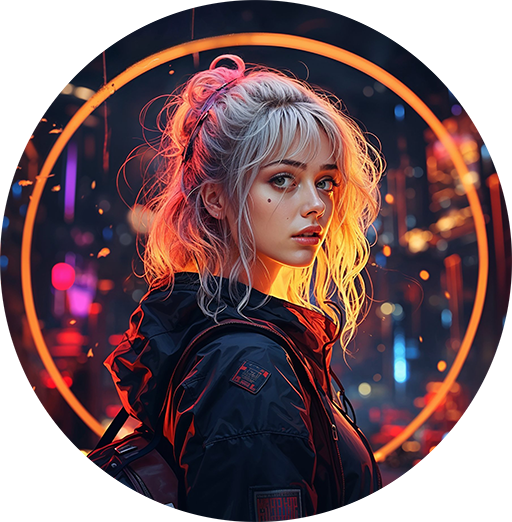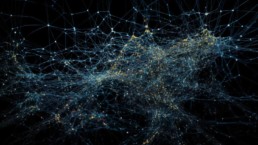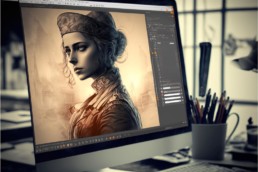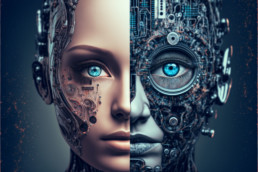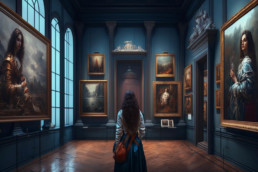AI-Powered Art Tutorial: Transform Famous Musicians into Kids with Midjourney
AI-Powered Art Tutorial: Transform Famous Musicians into Kids with Midjourney
Discover how to recreate your favorite musicians as children using the AI-powered tool Midjourney, which generates images from simple text inputs.
Taylor Swift, Ed Sheeran and Shakira.
💬 [Musician] [age], [Type of shot], [Shot details], studio photography, volumetric lighting, [clothing], [facial expression], [trait], realistic, [Focal Length], expressive, iconic, 4k --ar 2:3
In this mini-tutorial, we’ll focus on transforming famous musicians into their younger selves. Using Midjourney, an AI-powered image generation tool, you can create images of anyone as a child simply by adjusting the text inputs.

💬 Taylor Swift as a kid, portrait, close-up shot, studio photography, volumetric lighting, wearing a dress, smiling, cheerful, realistic, 50mm, expressive, iconic, 4k
In this example, we aim to transform Taylor Swift into a child. You can further customize the image by specifying the outfit colors and background. For simplicity, we’ll let the AI decide those aspects for us.
To generate new versions of the image, press the 🔁 button in Midjourney until you’re satisfied with the result. Let’s try with Ed Sheeran, and notice how the AI offers four different versions (you can re-roll for more options). Select the images that closely resemble the real person and upscale them for better quality.

💬 Ed Sheeran as a kid, portrait, close-up shot, studio photography, volumetric lighting, wearing a t-shirt, smiling, friendly, realistic, 50mm, expressive, iconic, 4k --ar 2:3
And finally Shakira.
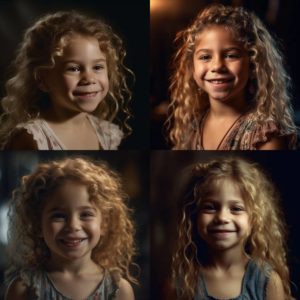
💬 Shakira as a kid, portrait, close-up shot, studio photography, volumetric lighting, wearing a dress, smiling, cheerful, realistic, 50mm, expressive, iconic, 4k --v 5 --s 750
The AI does an impressive job of retaining well-known traits while imagining what the person might have looked like as a child, or exaggerating childlike features. Let’s upscale the first photo.
You can modify the base prompt to transform any known figure into a child. Have fun experimenting with different musicians, adjusting their outfits, and seeing the AI’s imaginative creations.
Convolutional Neural Networks in Deep Learning for Artists
Have you ever wondered how artificial intelligence can recognize and understand images? Convolutional Neural Networks (CNNs) play a significant role in this process. As an artist interested in the intersection of art and AI, it’s important to know the basics of CNNs and how they work. In this blog post, we’ll explore CNNs and their applications in a simple and easy-to-understand way.
What are Convolutional Neural Networks?
Convolutional Neural Networks (CNNs) are a type of deep learning model used in computer vision tasks, such as recognizing objects in images and videos, locating specific items within a scene, or dividing an image into meaningful segments for further analysis.
CNNs consist of multiple layers that work together to extract features from input data and make decisions. These layers include convolutional layers, which apply filters to the input data and extract relevant patterns, pooling layers that downsample the output to reduce computational cost, and fully connected layers that help with classification or prediction tasks.
Some applications of CNNs include facial recognition, self-driving cars, medical image analysis, and even natural language processing.
How do CNNs work?
A CNN processes input data, such as an image, through a series of steps:
- Input layer: The input layer takes raw data, like an image or a video, and sends it to the next layer for processing.
- Convolutional layer: This layer applies a collection of filters to extract features like edges, corners, and forms from the input data.
- ReLU layer: A rectified linear unit (ReLU) activation function is used to add non-linearity to the output and improve the network’s performance.
- Pooling layer: This layer reduces the dimensionality of the feature maps created by the convolutional layer, usually by taking the maximum value in each patch.
- Fully connected layer: This layer takes the output of the pooling layer and applies a set of weights to produce the final output, which can be used for classification or prediction tasks.
For example, when classifying images of cats and dogs, a CNN would go through these steps to identify whether the input image is of a cat or a dog.
Types of CNNs
There are several types of CNNs, including traditional CNNs, recurrent neural networks, fully convolutional networks, and spatial transformer networks. Each type has its unique characteristics and applications in computer vision tasks.
Advantages of CNNs
CNNs are popular for computer vision tasks due to their:
- Translation invariance: The ability to recognize objects in an image regardless of their position.
- Parameter sharing: Reducing the number of parameters in the network, allowing it to generalize better to new data.
- Hierarchical representations: Learning features at various levels of abstraction.
- Resilience to changes: Adapting well to changes in lighting, color, and small distortions in the input image.
- End-to-end training: Allowing for faster convergence and optimized network performance.
Disadvantages of CNNs
Despite their many advantages, CNNs have some drawbacks:
- Lengthy training time: CNNs can be computationally expensive, especially with large data sets.
- Need for large labeled data sets: CNNs require a lot of labeled data to train effectively.
- Susceptibility to overfitting: CNNs can become too specialized to the training data, performing poorly on new, untrained data.
- Limitations in tasks requiring contextual knowledge: CNNs may not be as successful in tasks like natural language processing, which require more contextual understanding.
In conclusion, understanding CNNs can be helpful for artists working with AI and computer vision.
Understanding Robotic Perception in Artificial Intelligence
Robotic perception refers to the ability of robots to sense and understand their environment. This is a critical component of artificial intelligence and plays a key role in enabling robots to perform tasks in a variety of settings. Whether it’s detecting obstacles, recognizing objects, or locating landmarks, the ability to perceive and understand the environment is essential for robots to function effectively.
One of the main challenges of robotic perception is that the environment can be highly dynamic and uncertain.
Robots must be able to adapt to new situations, deal with changing conditions, and overcome unexpected obstacles. To achieve this, robotic perception systems often rely on a combination of sensors, algorithms, and machine learning techniques to process and analyze data.
There are several different types of sensors that are commonly used in robotic perception, including cameras, LiDAR, radar, and sonar. Each type of sensor has its own strengths and weaknesses and can be used to capture different aspects of the environment. For example, cameras are often used to detect and recognize objects, while LiDAR is commonly used to create a 3D map of the environment.
Machine learning is also a key component of robotic perception. With the ability to learn from data, robots can gradually improve their understanding of the environment and become better at detecting and responding to objects and obstacles. In addition to machine learning, robotic perception systems also often use computer vision techniques to analyze images and detect objects and landmarks.
The robotic perception is a critical component of artificial intelligence that plays a key role in enabling robots to sense and understand their environment. Whether it’s through the use of sensors, algorithms, or machine learning, robotic perception systems are essential for robots to function effectively and perform a wide range of tasks. Whether you’re a researcher, developer, or just interested in robotics, understanding the basics of robotic perception is an important step in advancing the field of artificial intelligence.
What is Rendering in Digital Art: Understanding the Basics
Rendering is an essential aspect of digital art and refers to the process of generating a final image or animation based on a set of inputs. In digital art, rendering is used to simulate real-world lighting, shadows, and materials to create photorealistic images and animations. Whether you’re working in 3D modeling, animation, or digital painting, understanding the basics of rendering is crucial for creating high-quality, professional-looking digital art.
The rendering process starts with a 3D model, which is essentially a digital representation of an object or scene.
The model is then given attributes such as materials, textures, and lighting, which are used to determine how the final image will look. Once the scene is set up, the renderer takes the 3D model and produces a 2D image that can be viewed on a screen.
There are several different rendering techniques and methods, each with their own strengths and weaknesses. Some common rendering methods include scanline rendering, rasterization, and ray tracing. Each method uses different algorithms to determine how light should interact with the 3D model and produce a final image.
One of the key benefits of rendering in digital art is that it allows artists to create images and animations that are incredibly lifelike and detailed. With the right tools and techniques, artists can create photorealistic images that look almost indistinguishable from real-life photographs. Additionally, rendering makes it possible to create images and animations that would be impossible or impractical to produce in the real world.
Rendering is a crucial aspect of digital art and plays a critical role in creating photorealistic images and animations. Whether you’re a beginner or an experienced artist, understanding the basics of rendering is an important part of creating high-quality digital art. Whether you’re working in 3D modeling, animation, or digital painting, taking the time to learn about rendering and the various techniques and methods can help you create truly stunning digital art.
Artificial Intelligence: A Game Changer for Human Life and the Future
Artificial Intelligence (AI) is one of the most exciting and rapidly evolving technologies of our time. With the potential to transform industries, improve our lives, and shape the future, AI is a topic of great interest and discussion. However, as with any new technology, there are both pros and cons to consider.
On the one hand, AI has the potential to revolutionize industries, improve efficiency, and solve complex problems. For example, AI is being used in healthcare to improve patient outcomes, in finance to prevent fraud, and in transportation to optimize routes. In the future, AI may even play a critical role in addressing global issues such as climate change and poverty.
On the other hand, there are also concerns about the impact of AI on employment, privacy, and security. For example, as AI becomes more advanced, there is a risk that it could replace human workers, leading to unemployment. There are also concerns about the use of AI for surveillance and the potential for AI systems to be hacked or used maliciously.
Despite these concerns, it is clear that AI will play a major role in shaping the future. In the coming years, AI technology is expected to continue to advance, and we will see increasingly sophisticated AI systems in a wide range of industries.
It is estimated that within the next decade, AI will be fully integrated into many areas of our lives, from our homes and workplaces to our healthcare and entertainment.
In conclusion, Artificial Intelligence is a game changer for human life and the future. While there are pros and cons to consider, it is clear that AI will play a major role in shaping the future. As technology continues to advance, it will be important to stay informed and engaged in the conversation about the impact of AI on society, and to work together to ensure that AI is developed and used in ways that benefit all of humanity.
AI Photography: Challenging Our Perception of Reality
The rise of AI technology has brought about many changes in various industries, and photography is no exception. With AI photography, the line between what is real and what is fake has become increasingly blurred. This has sparked a debate on the significance of authenticity in photography and the impact that AI technology has on the art form.
Artificial intelligence is being used to enhance photos, manipulate images, and even create entirely new images from scratch.
This technology can produce highly realistic images, making it difficult to distinguish between what was captured in a camera and what was created in a computer.
While AI photography has the potential to revolutionize the industry and open up new possibilities for artists, it also raises questions about the ethics of using AI in photography. Is it acceptable to use AI to create images that are not entirely real? And if so, should these images be labeled as such?
On one hand, AI technology has the potential to increase access to photography and democratize the art form. For example, AI can be used to recreate images of historical events or moments that were never captured in photographs. However, there is also the risk that AI photography could be used to deceive or manipulate the public, blurring the line between truth and fiction.
The debate on the significance of authenticity in AI photography is ongoing and will likely continue to evolve as the technology progresses. Regardless of one’s personal opinion on the matter, it is clear that AI photography is challenging our perception of reality and forcing us to rethink the meaning of authenticity in the digital age.
In conclusion, AI photography is a fascinating and complex topic that raises important questions about the role of technology in the art form and the impact that it has on our understanding of reality. As the use of AI in photography continues to grow, it will be important to carefully consider the ethical and philosophical implications of this technology.
Cryptocurrencies and AI art: a revolution in the making
Cryptocurrencies have been making waves in the financial industry for quite some time, but did you know they’re also starting to make their way into the world of art? Specifically, the integration of cryptocurrencies and Artificial Intelligence (AI) is starting to transform the art industry in new and exciting ways.
One of the main ways cryptocurrencies are impacting the art world is through the use of NFTs (Non-Fungible Tokens), which are digital assets that can represent ownership of unique items, such as artwork. NFTs are based on blockchain technology, which provides a secure and decentralized way to verify ownership and authenticity of digital assets.
NFTs are being used to sell and trade digital art pieces, allowing artists to receive payment for their work and for collectors to own a unique and valuable piece of digital art.
This is particularly significant in the AI art industry, where the use of algorithms and machine learning can create truly unique and one-of-a-kind pieces of art.
Blockchain and the Future of Digital Art
Moreover, the use of cryptocurrencies in the art industry can also enable new ways of supporting and funding emerging artists. For example, artists can create their own cryptocurrencies as a way to fund their work or even earn royalties from the sale of their art pieces. This can help to democratize the art world, making it more accessible for artists who may not have had the means to break into the industry in the past.
Another benefit of integrating cryptocurrencies and AI in the art industry is the potential for greater transparency and accountability. With the use of blockchain technology, all transactions related to the sale and ownership of art can be tracked and verified, providing greater transparency for both artists and collectors.
The integration of cryptocurrencies and AI in the art industry has the potential to revolutionize the way we view and value digital art. NFTs are already changing the way digital art is bought and sold, and as the technology continues to evolve, we can expect to see even more innovative and creative applications in the world of AI art. The future of art is looking bright, thanks to the power of cryptocurrencies and AI.
NFTs and Cryptocurrencies: A New Era of Art Ownership
Artificial intelligence (AI) has opened up new possibilities for artists, allowing them to create unique and innovative works of art that were previously impossible. With the help of AI algorithms, artists can generate music, images, and even entire pieces of art, leading to a new era of creativity. In this context, blockchain technology and cryptocurrencies are playing a vital role in revolutionizing the art world, allowing artists to monetize their work and giving collectors access to unique digital assets through marketplaces.
Objkt is a digital art marketplace that runs on the Tezos blockchain. The platform allows creators to mint and sell non-fungible tokens (NFTs) that represent unique digital assets such as art, music, and other types of media. Tezos provides fast and secure transactions, and its use of a low-energy proof-of-stake consensus algorithm makes it a more environmentally friendly option compared to other blockchain platforms. This has led to the popularity of Objkt.com in the digital art world, especially among artists who are concerned about the environmental impact of their work.
SuperRare is another digital art marketplace that operates on the Ethereum blockchain. The platform has gained attention for its ability to create a decentralized marketplace for digital art. SuperRare provides tools for artists to monetize their work and earn royalties on secondary sales. This has made it an attractive option for artists looking to earn a living from their digital art. SuperRare also allows artists to set a royalty fee, which means that they can earn a percentage of the resale price every time their artwork is sold on the platform. The use of cryptocurrencies on SuperRare allows for fast and secure transactions, while also providing a transparent and immutable record of ownership and provenance for each artwork.
These platforms are examples of how blockchain technology and cryptocurrencies are transforming the art world, providing new opportunities for artists to monetize their work and giving collectors access to unique digital assets. The use of cryptocurrencies like Tezos and RARE tokens is also making it easier for artists and collectors to transact in a decentralized and secure way, without the need for intermediaries.
AI art and its impact on the art world are changing the way artists create and sell their work. By utilizing blockchain technology and cryptocurrencies, artists can monetize their work and reach a global audience in a way that was previously impossible. As the technology continues to evolve, we can expect to see more innovative ways for artists to use AI and blockchain to push the boundaries of traditional art forms and create new ones altogether.
Ethereum in the AI art: from blockchain to NFTs
In this article, we will explore the world of Ethereum in the AI art, its decentralized blockchain technology, and discuss its potential impact on the future of art.
Ethereum is a decentralized, open-source blockchain that allows developers to build decentralized applications (DApps) and smart contracts. It is also a cryptocurrency, similar to Bitcoin, that uses blockchain technology to record and verify transactions. Launched in 2015 by a team led by Vitalik Buterin, Ethereum has quickly become one of the most popular cryptocurrencies in the world.
History
The idea for Ethereum began in 2013, when Vitalik Buterin, a young programmer and Bitcoin enthusiast, proposed the creation of a decentralized platform that would allow developers to build DApps and smart contracts. The idea was to create a blockchain that could execute code, not just record transactions. Buterin teamed up with a group of developers, including Gavin Wood and Joseph Lubin, and the Ethereum project was born.
Ethereum launched in 2015, and its initial coin offering (ICO) raised $18 million in Bitcoin and other cryptocurrencies. The launch of Ethereum was a significant milestone in the history of blockchain technology, as it introduced the concept of smart contracts to the world.
Function as a cryptocurrency
As a cryptocurrency, Ethereum is used to facilitate transactions on the Ethereum blockchain. Like Bitcoin, it is decentralized, meaning that it is not controlled by any central authority or government. Transactions are verified and recorded on the Ethereum blockchain, which is maintained by a network of nodes around the world.
Unlike Bitcoin, Ethereum is more than just a cryptocurrency. It also allows developers to build decentralized applications and smart contracts.
These applications and contracts can be used to create a wide range of decentralized services, from social networks to financial instruments.
Blockchain technology
Ethereum uses blockchain technology to record and verify transactions on its network. The Ethereum blockchain is a distributed ledger that is maintained by a network of nodes around the world. Transactions are recorded in blocks, which are linked together in a chain. Each block contains a record of multiple transactions, and once a block is added to the chain, it cannot be altered.
The Ethereum blockchain is unique in that it allows developers to build decentralized applications and smart contracts. Smart contracts are self-executing contracts that automatically enforce the terms of an agreement. They can be used to create a wide range of decentralized services, from voting systems to supply chain management tools.
NFTs
Ethereum introduced the concept of smart contracts, which are self-executing contracts with the terms of the agreement between buyer and seller being directly written into lines of code. This innovation paved the way for the creation of NFTs. In 2017, the first NFTs were created on the Ethereum blockchain using the ERC-721 standard, which allows developers to create unique, non-interchangeable tokens.
How NFTs are used in the art industry
The art industry has been greatly impacted by the use of NFTs, as they allow artists to monetize their digital creations in a new and innovative way. NFTs enable artists to sell their digital art as unique, one-of-a-kind assets that can be owned and traded like physical artwork.
NFTs have opened up new revenue streams for artists and collectors, allowing them to sell and buy digital art at higher prices. In March 2021, a digital artwork created by Beeple was sold for $69 million in an NFT auction, making it the most expensive NFT ever sold.
NFTs also enable artists to maintain control over their work, as they can set terms for how their art is used, such as limiting the number of reproductions or specifying that the original buyer is the only one who can display it.
In addition to digital art, NFTs are also being used in the music industry to sell unique tracks, and in the gaming industry to sell unique in-game items and characters.
Ethereum in the AI art
Artificial intelligence (AI) has opened up new possibilities in the world of art, enabling artists to create unique and innovative works of art. With the advent of NFTs and Ethereum, AI art has found a new way to be monetized and distributed. In this blog post, we will explore AI art and how it is being used in conjunction with NFTs and Ethereum.
NFTs and Ethereum have enabled AI artists to monetize and distribute their work in new and innovative ways. NFTs allow AI artists to sell their digital art as unique, one-of-a-kind assets that can be owned and traded like physical artwork.
Ethereum’s smart contract technology enables AI artists to set terms for how their art is used, such as limiting the number of reproductions or specifying that the original buyer is the only one who can display it. This technology enables artists to maintain control over their work and protect their intellectual property.
AI art is also being used in conjunction with NFTs and Ethereum to create interactive art installations that respond to data from the real world. For example, a project called “AI-Art House” uses machine learning algorithms to create unique digital paintings based on real-time data from the New York Stock Exchange. The resulting artwork is then sold as NFTs on the Ethereum blockchain.
What is AI art?
AI art is created using algorithms and machine learning techniques that are designed to generate images or other forms of art. AI art can range from abstract images to realistic portraits, and it is often created by training algorithms on large datasets of images or other visual data.
One of the most famous examples of AI art is the work of the Paris-based art collective Obvious. In 2018, Obvious created a portrait titled “Portrait of Edmond de Belamy” using a generative adversarial network (GAN), a type of machine learning algorithm. The portrait was then sold for $432,500 at an auction in New York.
AI art is a rapidly evolving field that is opening up new possibilities for artists to create unique and innovative works of art. The use of NFTs and Ethereum in AI art is enabling artists to monetize and distribute their work in new and innovative ways. AI art is also being used in interactive installations that respond to real-world data, creating a new form of art that is constantly evolving and changing. As the field of AI art continues to evolve, we can expect to see even more exciting and innovative creations in the years to come.
AI art and its impact on the art world: is AI art stealing?
Artificial intelligence (AI) has emerged as a revolutionary technology with the potential to transform virtually every industry, and the art world is no exception. AI has opened up new possibilities for artists to create unique and innovative works of art that were previously impossible. With the help of AI algorithms, artists can generate music, images, and even entire pieces of art, opening the door to a new era of creativity. This has given rise to the field of AI art, where artists are using this technology to push the boundaries of traditional art forms and create new ones altogether. In this context, it is essential to analyze the impact that AI art is having on the art world, both in terms of how it is being created and how it is being consumed.
In a recent article published in The New Yorker titled “Is A.I. Art Stealing from Artists?” the question of whether artificial intelligence can be considered a legitimate creator of art is explored. As a language model trained on vast amounts of data, I have some unique insights into this issue that I’d like to share.
The article raises a number of interesting points about A.I. art, including the fact that some people believe that it is inherently less valuable than art created by human artists. The argument goes that since A.I. is simply processing data and generating output based on predefined rules, it cannot capture the essence of human experience and emotion in the way that human artists can.
Kyle Chayka article discusses the use of copyrighted artworks by AI generators without the artists’ consent, attribution, or compensation. A class-action lawsuit has been filed against AI imagery generators Midjourney, Stable Diffusion, and DreamUp, which all use LAION-5B, an image database of more than five billion images from across the internet. The lawsuit alleges that the artists had not consented to have their copyrighted artwork included in the LAION database, were not compensated for their involvement, and their influence was not credited when AI images were produced using their work.
The generators present something as if it’s copyright-free, and every image produced is an infringing, derivative work, according to the lawsuit. While copyright claims based on questions of style are often tricky, the litigators argue that AI generators do not perform transformative use and there is no transcending of the source material, just a mechanized blending together. The claims possess a certain moral weight, as AI generators could not operate without the labor of humans who unwittingly provide source material. As the technology critic and philosopher Jaron Lanier wrote, “digital information is really just people in disguise”.
While it’s true that A.I. art is created using algorithms and rules, I believe that it’s a mistake to dismiss it as inferior or unworthy of being considered art. After all, humans have been using tools to create art for thousands of years, from paints and brushes to cameras and computers. A tool is just that – a tool. It’s what the artist does with that tool that matters.
A.I. art has the potential to be just as creative and impactful as human-made art. In fact, some A.I. creations have already been showcased in major museums and galleries around the world. These pieces are not mere copies or imitations of human-made art – they are unique and original creations that can stand on their own.
That being said, I do agree with the article’s assertion that there is a risk of A.I. art being used to devalue the work of human artists. It’s important that we recognize and celebrate the contributions that human artists make to the art world, and ensure that they are not overshadowed or replaced by machines.
While there is certainly a debate to be had about the place of A.I. art in the art world, I believe that it is a form of art that is here to stay.
As A.I. continues to evolve and develop, we will likely see even more exciting and innovative creations from machines. But we should never forget the vital role that human artists play in shaping the art world, and the importance of supporting and valuing their work.
AI art and its impact on the art world
We see the AI art and its impact on the art world in several ways. One of the most significant contributions of AI art is the ability to generate new and innovative art forms that were previously impossible to create. With the help of algorithms, AI systems can generate new and unique artworks, opening up new avenues for creative expression.
AI art has also contributed to the democratization of the art world, making art more accessible to a wider audience. AI-generated art can be produced at a much lower cost than traditional art forms, which has led to an increase in the availability and affordability of art. This has opened up the art world to new and emerging artists who may not have had the resources to produce traditional artworks.
Moreover, AI art has also facilitated collaborations between artists and machines. Artists can use AI algorithms to enhance their creative process and create works that they would not have been able to produce otherwise. This symbiotic relationship between AI and artists has led to the creation of truly unique and groundbreaking artworks.
Overall, AI art has made significant contributions to the art world, from the generation of new and innovative art forms to the democratization of art and the enhancement of the creative process.
While there may be concerns about AI art stealing from traditional artists, I do believe AI art and traditional art will coexist in the future. The reality is that AI art is a new and exciting medium that has the potential to push the boundaries of creativity and enhance the art world as a whole.
How Artificial Intelligence is Revolutionizing the Art World
In recent years, artificial intelligence (AI) has been making waves in the art world. Using machine learning and neural networks, artists are now able to create stunning, unique artworks that blur the lines between human creativity and machine intelligence. In this post, we will explore how AI art works and why it is revolutionizing the art world.
AI art works by using machine learning algorithms to analyze and learn from vast datasets of existing artworks. These algorithms can be trained to recognize patterns, styles, and other key features in the artwork, which they can then use to generate new images. One popular technique for creating AI art is the use of Generative Adversarial Networks (GANs), which consist of two neural networks that work together to create new images. The generator network creates new images based on the patterns it has learned from the training data, while the discriminator network tries to distinguish between real and generated images. As the two networks work together, the generator network becomes better at creating realistic images, and the discriminator network becomes better at identifying generated images.
Another popular technique for creating AI art is style transfer, which involves applying the style of one image to the content of another. This technique works by training a neural network to separate the style and content of an image, which can then be used to transfer the style to other images. This technique has been used to create stunning, abstract artworks that are both unique and visually striking.
The use of AI in art is not only creating new forms of art, but it is also challenging our understanding of what art is and where creativity comes from. Some argue that AI art is not really “art” because it is created by a machine and lacks the emotional or expressive qualities of human-created art. However, others argue that AI art is just as valid and creative as any other form of art, and that it is simply a new tool for artists to explore and express their ideas.
AI art is a fascinating and rapidly evolving field that is revolutionizing the art world. By using machine learning and neural networks, artists are creating stunning, unique artworks that challenge our understanding of creativity and art. Whether you are an artist, art lover, or simply curious about the intersection of technology and art, the world of AI art is definitely worth exploring.
